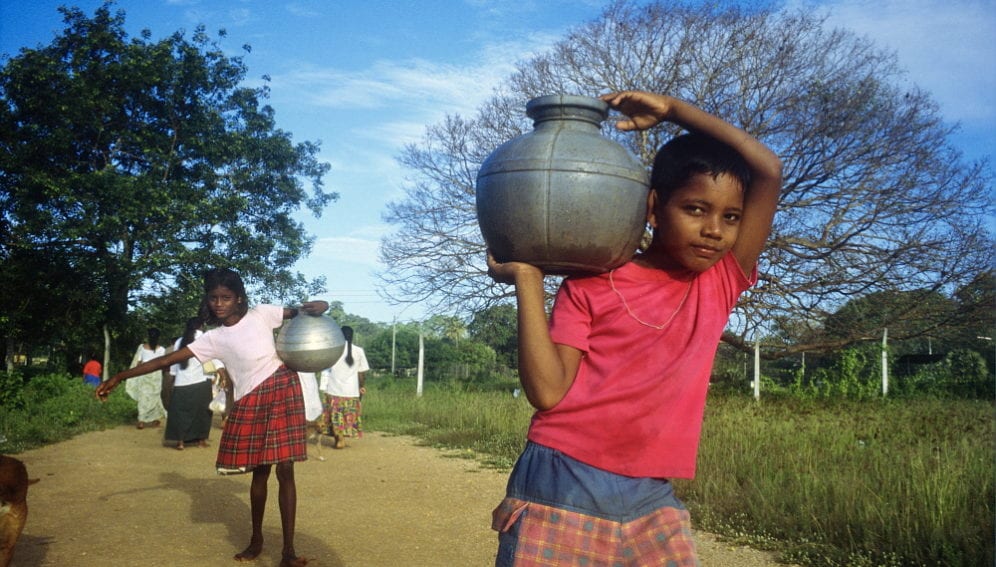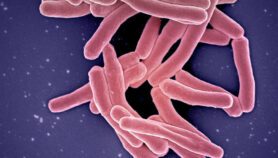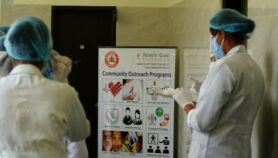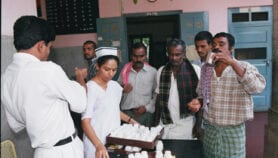By: Joe Turner
Send to a friend
The details you provide on this page will not be used to send unsolicited email, and will not be sold to a 3rd party. See privacy policy.
[ZARAGOZA] Dedicated investment in science and technology will be needed to have any chance of reaching the proposed water and sanitation-related Sustainable Development Goals (SDGs) by 2030, delegates at the UN-Water conference in Zaragoza, Spain, heard last week.
However, the conference (15-17 January) heard that blockages such as corruption, bad governance, poor pay of water facility operators and technicians, broken infrastructure and limited finances prevent existing technologies from being effectively used and hinder the spread of innovation.
“There is a lack of scientific and technical knowledge as well as a lack of the spread of [existing] knowledge,” Joakim Harlin, a senior water resources advisor at the UN Development Programme (UNDP) and the coordinator of the UN-Water working group on SDGs, told SciDev.Net.
Harlin pointed to a need for water technologies that do not require big infrastructure investments. Large projects such as dams may not be feasible in the future in many places due to water scarcity and a lack of funding.
Sustainable water management has been recognised as an important cross-cutting issue for the 17 SDGs being negotiated to replace the Millennium Development Goals (MDGs) this year. The proposed SDGs include several water-related targets, while the MDGs have just one.
Proposed SDG 6 is to ensure the “availability and sustainable management of water and sanitation for all” according to the current draft. The overall goals include targets for safe drinking water and sanitation for all; improving the safe use and development of water resources; reducing wastewater pollution; and reducing mortality and economic losses from water-related disasters.
The MDG target to “halve, by 2015, the proportion of the population without sustainable access to safe drinking water and basic sanitation” has seen mixed results. Although the target for water was met five years ahead of schedule, the UN has calculated that the target of access to basic sanitation will be missed by more than half a billion people. On current trends, the UN estimate is that it may not be met until 2026.
The conference also heard how new technologies are assisting. In India, satellite-based GPS (global positioning system) has helped calculate groundwater resources based on field measurements of water levels, while a mobile phone application in Bangladesh sends text messages to warn local farmers about possible floods.
Another example is the use of satellite imaging to assist water management in Africa, including the TIGER project led by the African Ministers’ Council on Water, to consider the status of water resources across many African countries.
Luis Veiga da Cunha, a water engineer from the Universidade Nova de Lisboa in Portugal, told SciDev.Net that desalination was another area with technological promise.
A 2014 scientific paper in the journal Nano Letters looked at the potential use of graphene, a material made of one-atom-thick sheets of carbon, in desalination. Punching tiny holes in the material does not impede water flow and so it could be suitable for filtering salt from sea water.
According to da Cunha, existing desalination systems are so expensive they can only be used in a few places that can pay for them, for example from tourism revenues. With the right investment, da Cunha believes graphene-based technology could be developed more quickly than the currently estimated 20-year research horizon.
Roger Falconer, the president of the International Association for Hydro-Environment Engineering and Research, tells SciDev.Net that many of the necessary technological tools are available, but are not being “implemented as widely as they could be for the benefit of mankind”.
He explains that many died in Sri Lanka after the Aceh earthquake and tsunami of December 2004, even though it was known for several hours beforehand that a tsunami was approaching.
Today, many more people have mobile phones, but Falconer doubts that an effective tsunami mobile phone warning system exists in Sri Lanka.
> Link to the study from Nano Letters
References
O’Hern, S. C., Boutilier, M. S., Idrobo, J. C., Song, Y., Kong, J., Laoui, T., … & Karnik, R. (2014). Selective Ionic Transport through Tunable Subnanometer Pores in Single-Layer Graphene Membranes. Nano letters, 14(3), 1234-1241.














